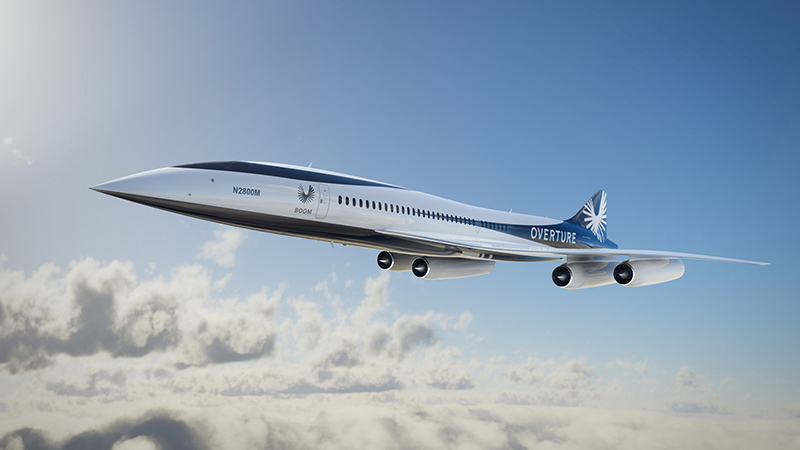

Image Courtesy: Boom Supersonic
Boom Supersonic promises to be an exciting development in the world of aerospace. As we previously discussed, it’s one of the forerunners in the new race for supersonic flight. But it also promises to be carbon net-zero – something we’ve never seen before.
Boom is currently on course to launch its first test flight at the end of 2023. It recently reached numerous technical and financial milestones, which should mean it’s able to stick to its timeline. So, what are these milestones, and why do they matter?
Boom Supersonic will conduct test flights using its XB-1 aircraft – a one-third scale version of its planned future aircraft. The XB-1 recently received its airworthiness certificate from the FAA, and its flight readiness review was scheduled for November. Provided this goes well, it’ll be on course to actually fly.
Of course, to get there, it’s had to complete numerous tests. Some of the most recent include ground vibration mode testing, speed taxi testing, and engine operability. After its flight readiness review, it’ll go through high-speed taxi testing to ensure it’s ready to actually fly.
Elsewhere, Boom’s proprietary engine, the Symphony, successfully completed its conceptual design review. Unsurprisingly, this stage is vital for moving on to the rig tests planned for early next year. Boom is hoping to balance supersonic flight with sustainable production and travel, and its Symphony engine is a vital cornerstone of this goal.
Financially, Boom recently received a massive cash injection from the NEOM Investment Fund (NIF). As we discussed back in February, NEOM is a large-scale sustainable city project planned for construction in Saudi Arabia. Part of the wider initiative is an investment fund, which will fund sustainable projects that could impact the NEOM city.
Reading between the lines, it shouldn’t be a surprise that the NIF picked Boom Supersonic. What could be more appropriate for improving accessibility to the NEOM city than a carbon net-zero, futureproof supersonic aircraft? The NIF’s funding puts Boom’s capital investment above $700 million, giving it decent financial security.
An aerospace company’s first test flight is a foundational milestone in its development. Boom’s recent technological and regulatory developments are necessary for it to actually fly its XB-1, as the tests provided vital data for it to launch safely.
Importantly, the XB-1 passed all previous tests, allowing Boom to gather useful data for its test flight. All that’s left now is for it to complete its high-speed taxi test, and then it should be ready. Granted, Boom won’t also be testing its fully-developed Symphony engine, but this is essentially a separate project.
While supersonic flight isn’t a new concept, most of us are all too aware of the failings of the previous commercial attempt. Boom’s aircraft may be slower than Concorde, but it’s more fuel-efficient and far more sustainable.
Will it be a groundbreaking shift in the future of commercial air travel? Potentially, but it would take a lot of time and work for supersonic flight to become the norm. Perhaps a more important development is the sustainability aspect; if Boom can prove it’s possible to run a supersonic plane on SAF, it could have a massive impact on the sustainability of subsonic planes.
